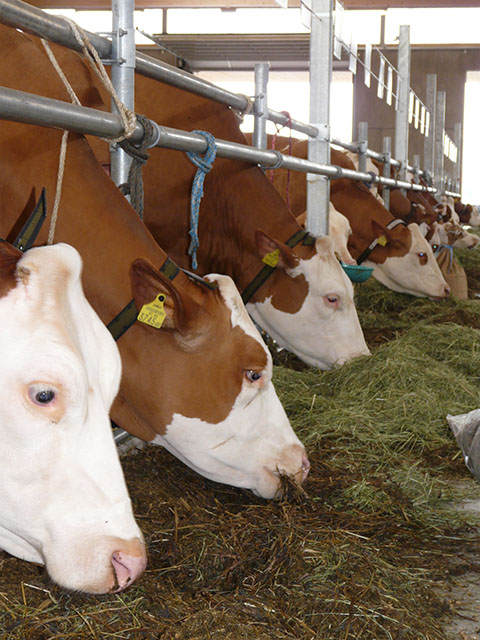When feeding dairy cows, the animals' energy needs must be met as best as possible. The body substance represents a certain “nutrient buffer”. If there is a lack of energy supply, nutrient reserves can be used to cover the energy requirements for milk production. However, a long-term or significant energy deficiency not only reduces the cows' milk production, but above all puts a strain on their metabolism and health. Severely underfed cows are more susceptible to inflammation and show poorer fertility results. Especially at the beginning of lactation, milk production increases faster than feed intake. Depending on the type of cow and what it is fed, this can lead to a more or less severe energy deficit with negative consequences.
At the Bio-Institute of the HBLFA Raumberg-Gumpenstein, a trial was carried out to test whether a reduced milking frequency in the first few weeks - and thus less milk withdrawal - can support the energy balance and metabolism. Furthermore, it was examined how the supply of concentrated feed around birth affects the animals. The results of the extensive study were published in the scientific journal “ Livestock Science” .
The experiment shows that even under organic conditions, a delayed supply of concentrated feed after birth does not have a positive effect on the animals' energy balance and metabolism. Feeding with concentrated feed before calving did not produce any positive effects under the organic conditions tested. In any case, cows need the best basic feed around calving and the amount of concentrated feed should be given gradually after calving. Those cows that show the best basic feed and total feed intake around calving (day -2 to +7) are also the fittest cows in the rest of lactation.
The study also showed that less milk withdrawal at the start of lactation does not affect feed intake. This allows the energy balance to be improved and the metabolism to be relieved. This also means the estrous cycle starts earlier. However, the milk production data indicate that if milking is only done once in the first week of lactation, after-effects in milk production must also be expected in the following weeks of lactation. Furthermore, an increased cell count was also found after single milking in the first three months of lactation, although no differences were observed in udder health.
In a further experiment, the cows in the experimental group are currently milked twice a day, but the milk withdrawal per milking is reduced and adjusted to the energy balance.
Detailed scientific publication:
Steinwidder , A.,Rohrer, H., Pfister, R., Gallböck, M., Podstatzky, L., Gasteiner, J. (2021) Effects of supplementation strategies during the transition period and milking frequency in early lactation on seasonal winter- calving organic dairy cows. Livestock Science 250; https://doi.org/10.1016/j.livsci.2021.104595
Summary of results:
Link to the scientific publication of the results (freely available until August 25, 2021): https://doi.org/10.1016/j.livsci.2021.104595







